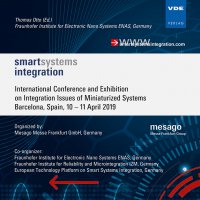Supporting the Self-Learning of Systems at the Network Edge with Microservices
Konferenz: Smart Systems Integration - 13th International Conference & Exhibition on Integration Issues of Miniaturized Systems
10.04.2019 - 11.04.2019 in Barcelona, Spain
Tagungsband: Smart Systems Integration
Seiten: 8Sprache: EnglischTyp: PDF
Persönliche VDE-Mitglieder erhalten auf diesen Artikel 10% Rabatt
Autoren:
Bierzynski, Kay; Lutskov, Pavel (Infineon Technologies AG, Am Campeon 1-15, 85579 Neubiberg, Germany)
Assmann, Uwe (TU Dresden, Helmholzstr. 10, 01069, Dresden, Germany)
Inhalt:
Until a machine learning algorithm is finalized and can be used in an application or product, many development steps have to be performed. Same of the more time consuming steps are the preparation of data sets for training and testing and the optimization of the algorithms. Afterthese steps, the trained model only needs to be integrated into the application code in most cases. For self-learning systems the development process does not end at this point. The reason for that is the execution context. The environments, where self-learning systems are deployed, are often dynamic and, to a certain degree, unpredictable. Smart homes and road traffic are good examples of such environments. To ensure the proper functioning of machine learning models in such contexts, support from the systems is necessary. lt must be able to perform tasks like distribution of computation and verifying the predictions of the trained machine learning models. Furthermore, the support infrastructure of the system must deal with the incremental or on-site training of the models. In case of systems at the network edge, this means training and adapting models with limited resources. Organizing, maintaining and adapting this kind of support can be quite difficult. The microservice architecture has the potential to reduce these challenges for systems at the network edge. In this paper, we discuss this potential at the example of the OpenLicht system, a self-learning lighting system at the network edge. Furthermore, solutions based on micro services for machine learning support are presented and we evaluate the microservice pattern against other architectural patterns.


